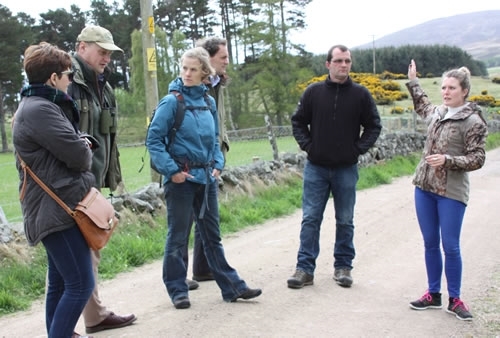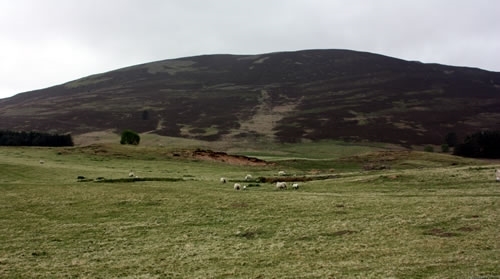By Joel Holt, GWCT Communications Officer
Members of the communications team at Fordingbridge HQ went to Scotland last week to learn about the impressive work currently going on at the demonstration farm at Auchnerran.

Director of marketing Andrew Gilruth, communications and fundraising manager Gillian Kenny, writer and research specialist Jen Brewin and I all toured the demonstration farm together.
Nestled in the remote area of Logie Coldstone on Deeside in Aberdeenshire, the tour was led by director in Scotland Adam Smith, research assistant Marlies Nicolai and shepherd Allan Wright. The guided tour started on Tuesday morning with a briefing, beginning with a talk from current chairman of GWCT Scotland and farm owner Andrew Salvesen.
Mr Salvesen spoke about why the farm is of huge importance to the charity in helping it reach its aims.
When the work began just over two years ago, the farm’s objectives were:
- to act as a repository for the GWCT's research and a reference point for other organisations that support its evidence-led approach
- to host ‘farm walk’ and ‘shoot walk’ days, and other initiatives such as Open Farm Sunday
- to allow the GWCT's supporters access to real time data on the farm, and information on its operations
- to be a forum for discussing best practice and for keeping farmers and managers informed of the latest developments
- to enhance the GWCT's shooting, farming and biodiversity advisory services, providing training days on snaring and predator control and enter a joint programme with the MacRobert Trust, allowing hands-on co-operation with other like-minded organisations.
 Shortly after this we began the walk of the farm, which occupies 1,030 acres (417 ha) of hill-edge land, where it is rich in breeding waders, with woodcock particularly noteworthy. As well as the farmed fields, semi-natural habitats range from heather moor, through birch woods, to lowland bog and flocks of sheep, and now lambs.
Shortly after this we began the walk of the farm, which occupies 1,030 acres (417 ha) of hill-edge land, where it is rich in breeding waders, with woodcock particularly noteworthy. As well as the farmed fields, semi-natural habitats range from heather moor, through birch woods, to lowland bog and flocks of sheep, and now lambs.
Later in the afternoon, we headed up to the moor where we saw a range of birds, with the highlight being curlew - a species which is continuing to decline.
Aside from the array of wildlife on show, we gained an insight into tunnel traps and their use in catching small mammalian predators and pests. This included a demonstration of how they operate.
The 4x4 journey across the moor also encompassed a series of walks where we were able to take in breathtaking views and appreciate the picturesque countryside.

One of the highlights of the day was viewing a state-of-the-art laser which is used by the Laser Fence Project.
Funded under the European Commission LIFE Programme and led by Liverpool John Moores University, seeks to investigate the use of innovative laser systems for creating virtual fences to help reduce environmental impacts of some agricultural activities, as well as potentially improving the productivity of farming.
The laser system is very effective in dispersing bird species, however, little research has been carried out on the effects these lasers may have on mammal species movements and behaviour.
It was a great experience meeting the team in Scotland and discovering the crucial conservation work they do with game management techniques in grazing-dominated habitats.
The demonstration farm at Auchnerran certainly continues to inspire, inform and influence.